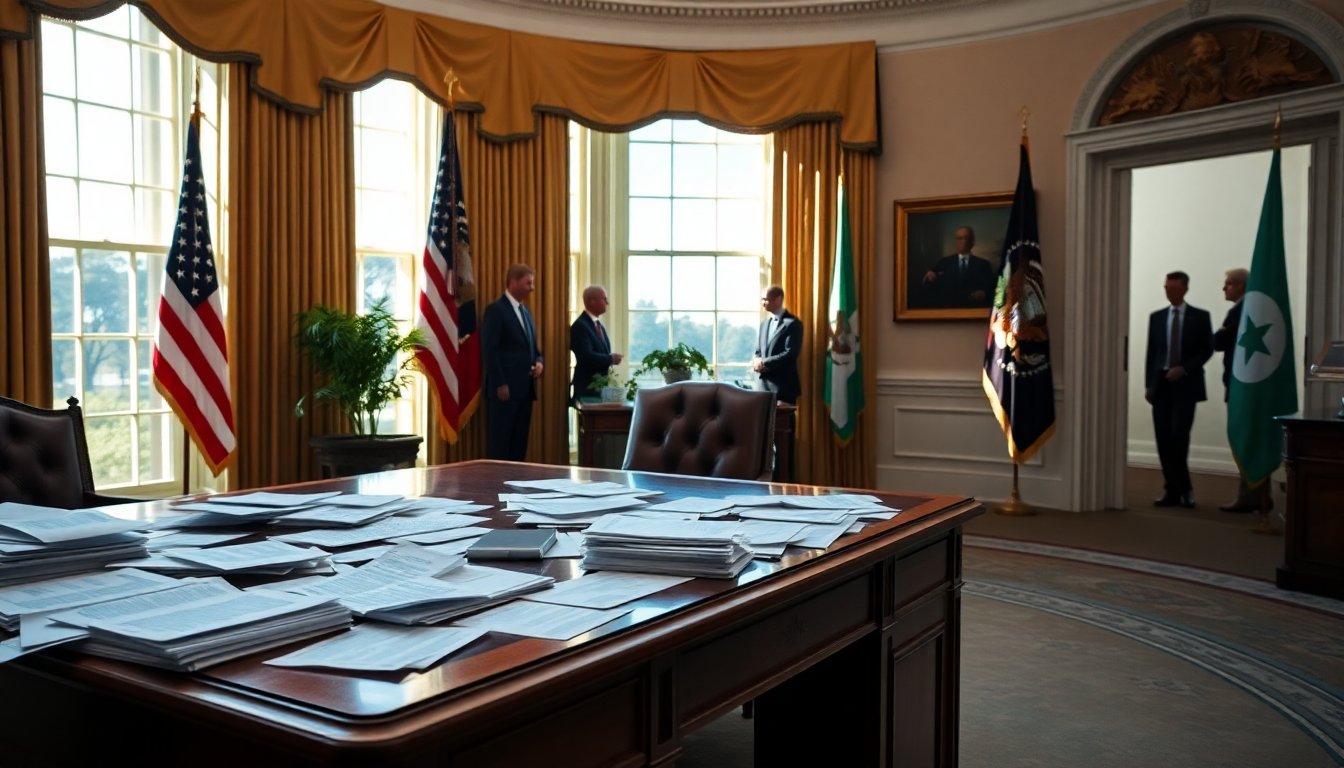Table of Contents
In a stunning turn of events, Ahmed al-Sharaa, once a leader among rebels battling the Syrian government, has now ascended to the presidency of Syria. His unexpected rise to power, which saw him ousting the long-standing leader Bashar al-Assad, has paved the way for a significant meeting with President Trump at the White House.
This unprecedented encounter raises questions about the future of U.S.-Syria relations and the ongoing complexities in the region.
Al-Sharaa’s trajectory from the ranks of al-Qaeda to the presidential office signifies not only a personal victory but also a broader shift in the dynamics of Middle Eastern politics.
As he prepares to meet Trump, both leaders face the challenge of navigating a relationship shaped by past conflicts and current aspirations.
The improbable journey of Ahmed al-Sharaa
Born into a tumultuous background, Ahmed al-Sharaa originally aligned himself with radical groups in Syria, fighting against the oppressive regime of Bashar al-Assad.
However, amidst the chaos of war, he reevaluated his approach and gradually emerged as a key figure advocating for reform and stability. His strategies, emphasizing diplomacy and coalition-building, resonated with a war-weary populace.
Revolutionary tactics and leadership
Al-Sharaa’s leadership style diverges significantly from the traditional authoritarian models prevalent in the region.
His focus on engaging various factions within Syria laid the groundwork for his eventual consolidation of power. By presenting himself as a unifier rather than a polarizing figure, he managed to attract support from both moderate and hardline groups, further solidifying his position as a legitimate leader.
Preparing for the White House meeting
As al-Sharaa approaches his meeting with the U.S. president, the stakes are higher than ever. The Trump administration is expected to discuss key issues such as human rights, regional stability, and the ongoing conflicts that have plagued Syria for over a decade.
Al-Sharaa’s ascent poses a fresh opportunity for the U.S. to recalibrate its foreign policy in the Middle East.
Key to their discussions will be the future of U.S. involvement in Syria and the potential for diplomatic relations. With al-Sharaa at the helm, there is speculation about the possibility of a more favorable U.S. stance towards a government that promises reform and progress.
Human rights considerations
However, any potential partnership will be scrutinized under the lens of human rights abuses that have marred Syria’s recent history. Activists and international organizations are urging the U.S. to prioritize discussions surrounding human rights reforms during this pivotal encounter. This includes addressing the treatment of political prisoners and advocating for the release of those unjustly detained.
Conclusion: A new chapter for Syria
The forthcoming meeting between Ahmed al-Sharaa and President Trump represents a critical juncture not only for Syria but also for the broader geopolitical landscape. As both leaders prepare for discussions that could redefine their countries’ futures, the implications of this meeting will resonate far beyond the walls of the White House.
Should al-Sharaa successfully navigate this diplomatic challenge, he might emerge as a transformative figure in a region often characterized by turmoil. Ultimately, the outcome of this meeting will depend on both leaders’ willingness to engage in a manner that fosters genuine dialogue and meaningful change.





